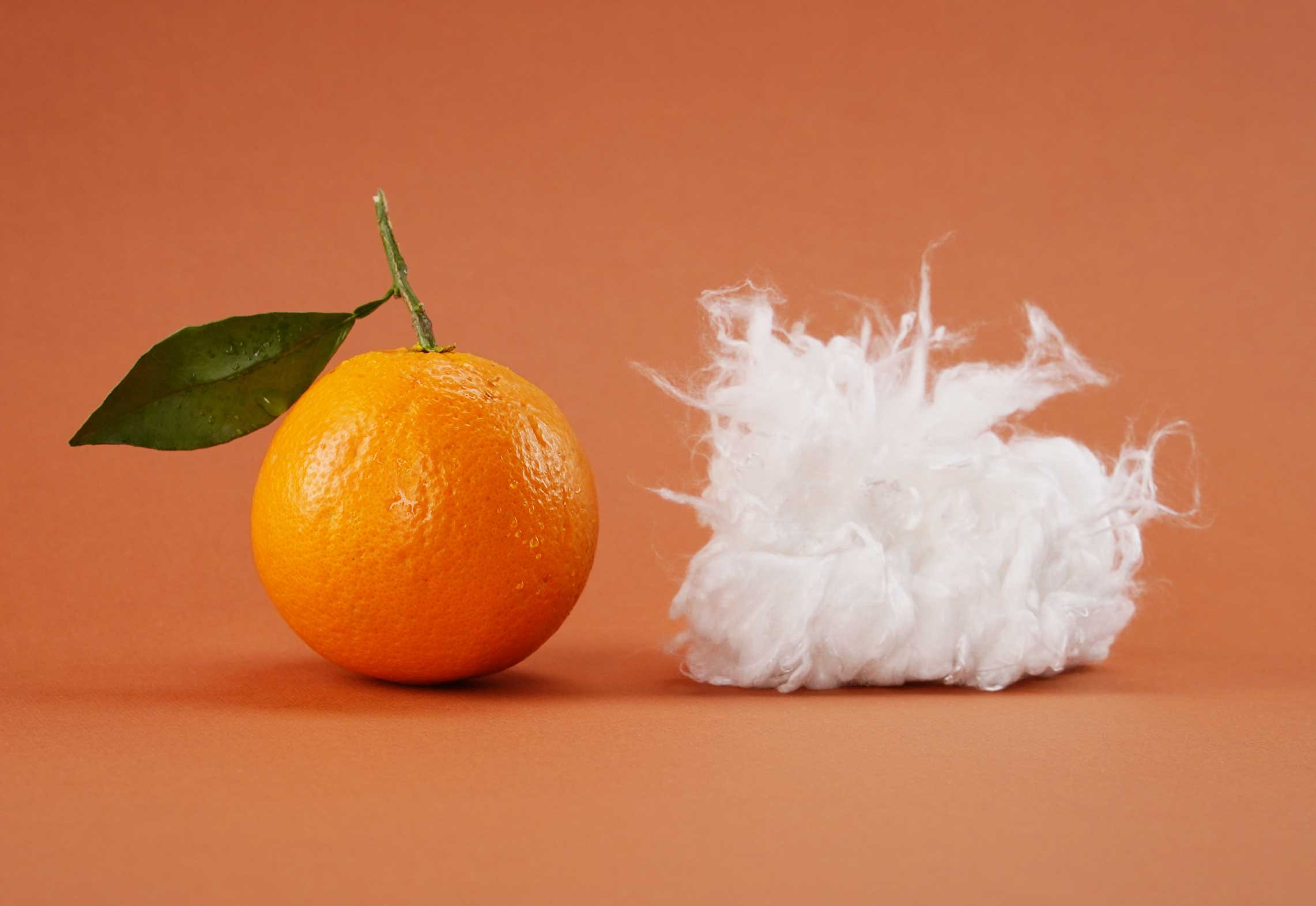Material Guide: Orange Silk
Eco-friendly and vegan textile replacements for animal-derived fabrics have lately come from surprisingly sources, leather made from grapes, pineapples and apples are slowly but surely stepping out into the mainstream and even in fast fashion houses too. Another innovative fruit-derived fabric, this time a silk replacement (about time), is set to join them: orange silk, created by the Italian company Orange Fiber.
But first, let’s talk about conventional silk and how it’s made.
Silk is produced from the cocoons of larvae, meaning most of the insects raised by the industry itself don't live past the pupal stage. Roughly 6 000 silkworms are killed to make a single kilogram of silk. This means that billions, if not trillions of silkworms are killed due to silk production every year. The luxurious and popular silk fabric is made by boiling thousands of silkworms alive in their cocoons which makes the cocoon unravel and allows the extraction of the silk fibre. Silk production has been found to be the second worst material for the environment, after leather. According to PETA.
Orange silk
Founded in 2014 by Adriana Santanocino and Enrica Arena following a collaboration with the Politecnico di Milano university. They came up with the idea of using what remains after squeezing oranges for juice, which amounts to more than 700 000 tons of byproduct in Italy alone. The girls saw gold where others saw waste. The brand has patented a technology that extracts cellulose from the leftovers that remain after the fruits are juiced. The cellulose can then be transformed into a biodegradable, luxurious silk-like fabric, which was presented for the first time in Milan in 2014.
Orange Fiber has developed a soft, lightweight fabric that drapes easily and can be coloured and printed just like traditional materials. The material extraction happens in Sicily, home to a large orange industry. The raw material is then spun in a spinning factory in Spain before it returns to Italy, this time to Como, to be transformed into the finished fabric. Which means the whole production process is being done in Europe, a plus both when it comes to environmental matters and social wellfare.
Orange silk from Orange Fiber has so far been seen in collections by Italian brand Salvatore Ferragamo, H&M and E. Marinella among others, it has won H&M’s Global Change Award, mentored by brands such as Adidas, Zalando, Target and Kering and the fabric has also been showcased at the Victoria & Albert Museum’s exhibition Fashioned From Nature. We see Orange Fiber popping up on big scenes all over the world and truly hoping to see this wo derful innovation taking a bigger market share in the nearest future.
Benefits of orange fiber
Orange Fiber is created from citrus juice by-products that would otherwise be thrown away. This means that hundreds of thousands of tons of orange peels find good use as ethereal fabrics perfectly suited to high quality textiles and fashion.
Organic orange fiber fabric is soft and strong and drapes beautifully on the body.
From the perspective of safeguarding the interests of the environment The world production of waste materials in the form of orange peels is exceeding 700 tons per year. By utilizing this waste productively Orange Fiber is offering a solution
While a textile made from food is a little unusual at first glance, the idea has environmental and social benefits, as well as being a positive addition to the fashion and textile industry. In addition to being good for the environment, the textile is good for the body as well, containing health properties.
As it’s made from citrus, the natural oils within the fabric contain vitamins A, C and E. Upon contact, these vitamins are released and absorbed through the skin making the fabric a wearable body cream.





